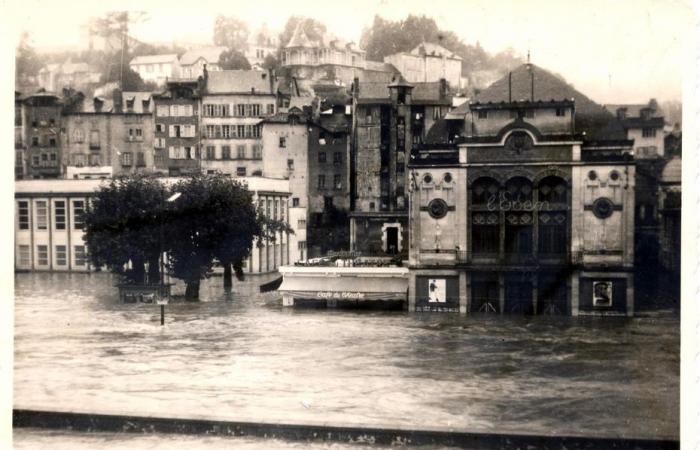
The deadly floods in Spain have reignited the debate on the anticipation of violent climatic events. In Limousin, an event marked memories and still serves as a reference today. A look back at the exceptional flood of 1960 during which several municipalities in Creuse, Corrèze, but also Dordogne, found themselves under several meters of water.
The essentials of the day: our exclusive selection
Every day, our editorial team reserves the best regional news for you. A selection just for you, to stay in touch with your regions.
France Télévisions uses your email address to send you the newsletter “Today’s essentials: our exclusive selection”. You can unsubscribe at any time via the link at the bottom of this newsletter. Our privacy policy
It is a tragic episode that will forever mark the region. Autumn 1960, the months of October and November were very rainy and extremely turbulent with an incessant parade of areas of bad weather coming from the Atlantic and the Mediterranean.
On Monday October 3 and Tuesday October 4, 1960, a major disturbance arrived on the Millevaches plateau, and brought torrential rain. A quarter of the annual precipitation falls in 48 hours, which represents more than 2000 liters per m2.
The town of Tulle almost underwater, October 4, 1960.
•
© Municipal archives of Tulle
Three rivers in the region (the Creuse, the Corrèze and the Vézère) which draw their source from the Millevaches plateau are blocked and overflow.
In Creuse, the town of Aubusson is particularly affected. For hours, there was no electricity or supplies. The city is almost cut off from the world. The famous tapestry workshops that made the town famous are seriously affected.
Below is an extract from our column on this flood:
duration of video: 00h00mn20s
Extract from an INA video on the flooding in Aubusson for our chronicle on the 1960 floods in Limousin.
•
©Cinémathèque de Nouvelle-Aquitaine
Tulle and Brive in Corrèze are also flooded. The decline, when the water recedes, shows the scale of the disaster.
When it didn't destroy everything, the water left the place in a sorry state. The municipal theater, the Eden, the Quai de Chammard, the post office Place Carnot and Place Tavé… all these sites are unrecognizable.
Water submerged Place Carnot et Tavé on October 4, 1960, in Tulle.
•
© Municipal archives of Tulle
Thus, in the space of 24 hours, precipitation brought between 100 and 200 mm of water to the Corrèze watershed, leading to a rapid rise in its level to reach the 5.43 meter coastline at Tulle. .
At the time, the material damage was estimated for the department at 7 billion old francs.
The town of Tulle almost underwater, October 4, 1960.
•
© Municipal archives of the City of Limoges
In total, seven people died in the eight affected departments: two in Aubusson, three in Corrèze and two in Dordogne. Added to this are thousands of victims and hundreds of businesses destroyed.
Also read: Floods: a natural phenomenon in Limousin
Limousin has experienced several episodes of flooding in its recent history. For example, from July to December 1992, the former region experienced six months of heavy rains. But it was the following year that the last significant floods occurred. They date from the end of 1993 until the beginning of the following year. At the time, Corrèze was affected by floods and landslides. Haute-Vienne is also affected.
However, the 100-year flood of 1960 serves as a reference today. Indeed, it gave birth to the Natural Flood Risk Prevention Plan (PPRi) implemented at the municipal level. Furthermore, there are Flood Prevention Action Programs (PAPI). These were launched in 2002 in New Aquitaine and allow to prepare the implementation of the flood directive, at municipal level.
Also read: “It’s Indian summer on All Saints’ Day”. With 25°C on the thermometer, residents and tourists are surprised by the summer weather
The region is not at the end of its troubles. Floods are likely to recur due to climate change with alternating episodes of intense rain and significant droughts.





